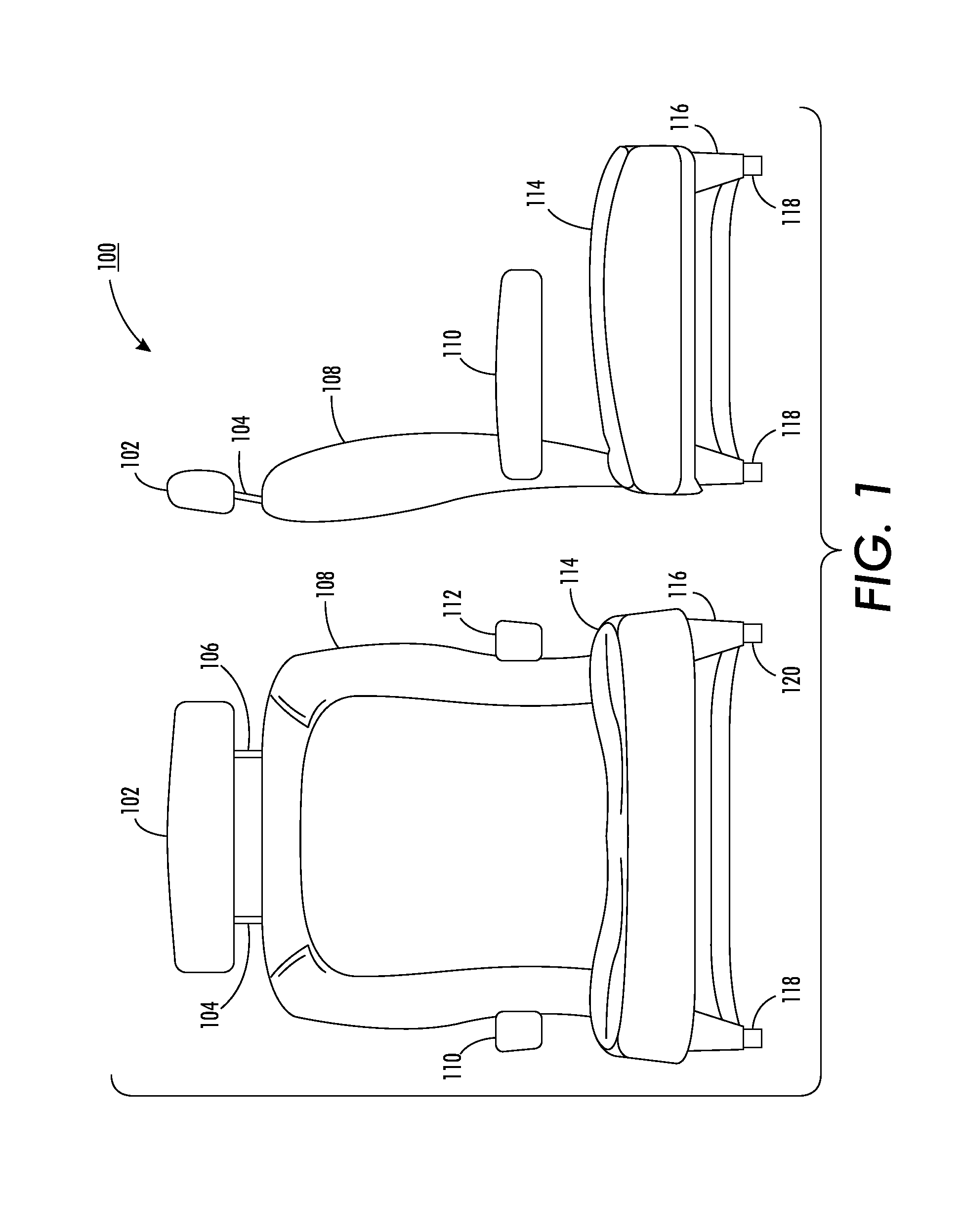Front seat vehicle occupancy detection via seat pattern recognition
a technology for vehicle occupancy and seat pattern recognition, applied in the field of front seat vehicle occupancy detection via seat pattern recognition, can solve the problem of quite challenging automatic solution for determining the number of occupants in a vehicl
- Summary
- Abstract
- Description
- Claims
- Application Information
AI Technical Summary
Benefits of technology
Problems solved by technology
Method used
Image
Examples
example front passenger
Compartment
[0043]Reference is next being made to FIGS. 6A and 6B which illustrate a front passenger compartment of an example motor vehicle taken from the standpoint of the front of the vehicle looking through the front windshield 602. In FIG. 6A, the front passenger compartment of vehicle 600 is empty and thus features are readily extracted using the teachings hereof to identify headrest 603A and front passenger seat 603B, as well as headrest 605A of driver seat 605B shown positioned directly behind steering wheel 607. In FIG. 6B, the front passenger seat 603B is shown occupied by passenger 604 and the front driver's seat 605B is occupied by driver 606. The windshield area of the motor vehicle can be isolated and extracted from the image using, for instance, it's location relative to sideview mirrors 608A-B and the non-glass region surrounding the windshield itself.
second embodiment
Flow Diagram of Second Embodiment
[0044]Reference is now being made to the flow diagrams of FIGS. 7-8 which collectively illustrate one example embodiment of a method for determining whether a violation has occurred by a vehicle traveling in a HOV lane. This embodiment is used in conjunction with various aspects of the seat feature extraction teachings hereof. Flow starts at 700 and immediately proceeds to step 702 wherein an image of a motor vehicle traveling in a HOV lane is received. The image is captured using, for example, the camera system of FIG. 2. The captured image may be preprocessed for contrast, noise reduction, and motion deblurring. In various embodiments, the background is identified and the vehicle is located in the scene.
[0045]At step 704, a front windshield area of the vehicle is isolated via feature extraction (e.g. parallel lines between the upper / lower windshield and side mirrors). An example front windshield area is shown in FIG. 9. Once the windshield has been...
PUM
 Login to View More
Login to View More Abstract
Description
Claims
Application Information
 Login to View More
Login to View More - R&D
- Intellectual Property
- Life Sciences
- Materials
- Tech Scout
- Unparalleled Data Quality
- Higher Quality Content
- 60% Fewer Hallucinations
Browse by: Latest US Patents, China's latest patents, Technical Efficacy Thesaurus, Application Domain, Technology Topic, Popular Technical Reports.
© 2025 PatSnap. All rights reserved.Legal|Privacy policy|Modern Slavery Act Transparency Statement|Sitemap|About US| Contact US: help@patsnap.com



